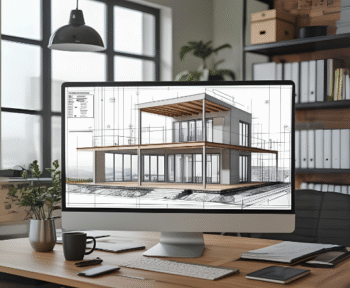BIM Ready is not just about acquiring latest software and training your internal team, it’s a journey and has to be looked at different aspects like people, process and outputs and align them together for meaningful output for all the stake holders involved in it.
While we have already mentioned about the four different phases in the earlier blog, in this article We have listed some of the best practices to guide you through planning stages and avoid pitfalls while implementing BIM.
Setting up the Team:
Senior Management:
Operational staff may be the first to experience BIM potential however it has to be backed by an efficient leader to make the transition successful and efficient. There would be numerous disruptions and challenges like financial, operational and process during transition. Hence you need support from senior leadership to implement the considerations and look at them in a realistic approach in long run. Consider your team members carefully people with existing knowledge on BIM processes and procedures would be added advantage.
Establish Standards:
Collaboration lies in the heart of BIM so don’t stray to far in developing your own approach. There are a wide range of different approaches for Project management and you can adopt some of the most common framework like PRINCE2. There is no need to deviate too far to deliver a BIM implementation project.
Standards have to be set for creation of Models, Internal processes used for technical and representational standards. Documenting the processes required to deliver BIM is advisable and it will be useful checklist to measure and implement new processes by considering existing interconnected systems and procedures.
Once your standards have been set you’ll also need to ensure that they’re followed with a range of control measures to ensure that staff across your company does the right thing.
Decide which tools you will use:
There are different tools available and it is important to carefully review them before making a final decision to adopt. It will always advisable to create the checklist and compare them and understand which tools would benefit you for your set requirements. Your projects team should research establish the extent to which your chosen tool(s) work well together – sharing information in an accurate and timely fashion without losing data as files travel between systems and partners.
Training and Development:
Creating communication plans and setting up trainings for teams is crucial for the success of implementation. As details of your implementation scheme become clearer you need to work out who you will involve and when and what you will tell different groups of stakeholders. Understanding of BIM is likely to be mixed so coming up with a communications plan will ensure that appropriate staff are approaching the challenges of the project from a standard level of understanding.
Set Realistic goals:
Reasonable targets are necessary to maintain the programme on track. Maintaining business as usual while steering a major change in operations would be challenging. Numerous challenges like training needs to hardware and software procurement, testing, and making decisions. Hence set realistic goals which are achievable.
Simplify and Plan for Contingency:
Ultimate objective for BIM should be to simplify the processes, without proper controls you end up developing complex processes which are inefficient and shoot the budget out of proportion. Lay down a clear strategy and be mindful of your BIM implementation, consider the cost and benefit of every process at every step to ensure you’re not doing unnecessary work and remain flexible. Considering the possible risks at every stage of the process and monitoring and mitigating these risks will be essential to keeping the project on track.







